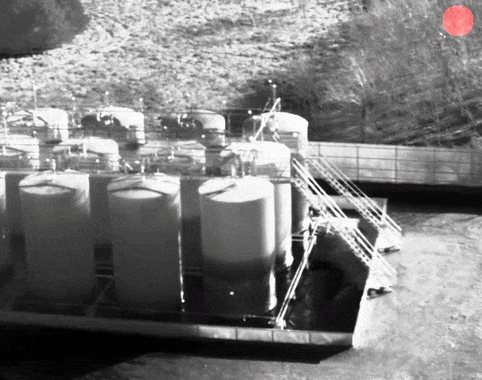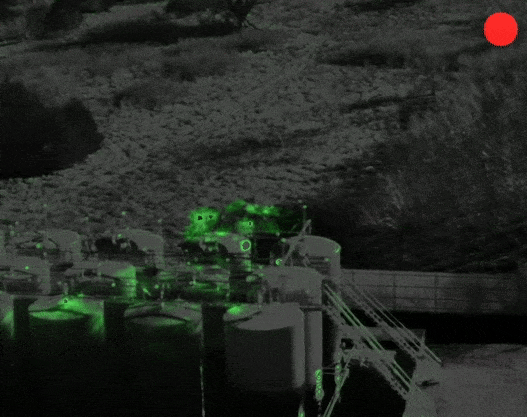Airborne Optical Gas Detection: Applications and Case Studies
- Arcsky Team
- Feb 27
- 3 min read
Updated: Mar 3
Gas leaks pose significant risks to both the environment and industrial operations. Methane and other volatile organic compounds (VOCs) released from oil and gas facilities contribute to air pollution, safety hazards, and regulatory non-compliance. Traditional inspection methods, such as handheld detectors and ground-based surveys, can be time-consuming, labor-intensive, and limited in scope. Optical gas imaging (OGI) technology mounted on drones offers a solution to these challenges, providing a more comprehensive and efficient approach to leak detection and environmental compliance.

Using drones equipped with OGI cameras allows for rapid aerial assessments of facilities, capturing emissions from equipment that might be difficult or unsafe to access otherwise. This method improves efficiency by covering large areas quickly while reducing inspection time and labor costs. Additionally, drones provide a unique vantage point, enabling inspectors to visualize leaks from multiple angles, identify sources more accurately, and document findings more effectively. By detecting leaks early, operators can take corrective action before minor leaks escalate into costly repairs or regulatory violations.

Seeing the issue with the camera and the aircraft is only half of the equation. Arcsky partners with AerialOGI to offer a complete solution for detection, capture, and reporting. With AerialOGI's innovative capture and post-processing tools, field operators can quickly and easily flag incidents, which will be automatically processed to produce actionable reports, easily exportable to other leak detection and repair (LDAR) tools. The AerialOGI payload can also detach from the gimbal and function as a handheld OGI camera system, retaining all the same features as the drone-mounted payload.

Case Studies
Methane Leak at a Production Site
During a recent inspection by one of our clients at a production site, our drone-mounted OGI camera detected multiple leaks from the tank battery connections. These leaks, if left unaddressed, could have contributed to increased emissions and potential safety risks.
Additionally, they identified an unlit flare releasing unburned gas into the atmosphere, a significant issue both environmentally and operationally. Unlit or malfunctioning flares can lead to higher greenhouse gas emissions and non-compliance with environmental regulations. By quickly detecting these problems, the facility was able to take corrective action to prevent further emissions and comply with regulatory standards.
Pipeline Leak Investigation
In another case, a client assisted with an environmental complaint where a farmer reported seeing bubbling in a nearby stream. Concerned about potential contamination, they needed to find definitive evidence of a leak. Using our drone-mounted OGI camera, they were able to identify a gas leak from a buried pipeline, providing clear visual proof of the issue.

This data is crucial in expediting repairs and mitigating further environmental impact. Pipeline leaks, especially in waterways, pose significant risks to both public health and wildlife, making early detection and rapid response critical. Without drone-based detection, this leak could have gone unnoticed for much longer, leading to more extensive damage and regulatory penalties.
Regulatory Considerations
The Environmental Protection Agency (EPA) has implemented stringent regulations aimed at reducing methane emissions from oil and gas operations. The EPA’s OOOOa (Quad-Oa) regulations, for example, require companies to monitor and repair fugitive emissions from well sites, compressor stations, and other infrastructure. Compliance with these rules is essential to avoid fines and legal consequences. Drone-based OGI technology aligns with these regulatory requirements by offering a highly effective, cost-efficient way to detect and address leaks in accordance with federal and state standards.
Oil and gas producers, inspection companies, and state environmental compliance departments are increasingly adopting our drone-based OGI technology for routine inspections and regulatory monitoring. This approach helps companies meet environmental standards, mitigate financial and legal risks, and improve overall operational safety. As regulatory scrutiny increases and industries seek more effective ways to manage emissions, drone-based gas detection is becoming an essential part of modern environmental monitoring strategies.
Interested to learn more about the Optical Gas Imaging Payload? Follow this link: X55 paired with the Aerial OGI Payload. Feel free to reach out to us if you'd like any more information about aerial optical gas inspection or would like to discuss a specific use-case.






